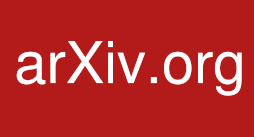Documentdetail
ID kaart
oai:arXiv.org:2403.19584
Onderwerp
Computer Science - Computer Vision... Computer Science - Artificial Inte...Auteur
Zhou, Zhongliang Zhang, Jielu Guan, Zihan Hu, Mengxuan Lao, Ni Mu, Lan Li, Sheng Mai, GengchenCategorie
Computer Science
Jaar
2024
vermelding datum
07-08-2024
Trefwoorden
models computer img2locBeschrijving
Geolocating precise locations from images presents a challenging problem in computer vision and information retrieval.Traditional methods typically employ either classification, which dividing the Earth surface into grid cells and classifying images accordingly, or retrieval, which identifying locations by matching images with a database of image-location pairs.
However, classification-based approaches are limited by the cell size and cannot yield precise predictions, while retrieval-based systems usually suffer from poor search quality and inadequate coverage of the global landscape at varied scale and aggregation levels.
To overcome these drawbacks, we present Img2Loc, a novel system that redefines image geolocalization as a text generation task.
This is achieved using cutting-edge large multi-modality models like GPT4V or LLaVA with retrieval augmented generation.
Img2Loc first employs CLIP-based representations to generate an image-based coordinate query database.
It then uniquely combines query results with images itself, forming elaborate prompts customized for LMMs.
When tested on benchmark datasets such as Im2GPS3k and YFCC4k, Img2Loc not only surpasses the performance of previous state-of-the-art models but does so without any model training.
Zhou, Zhongliang,Zhang, Jielu,Guan, Zihan,Hu, Mengxuan,Lao, Ni,Mu, Lan,Li, Sheng,Mai, Gengchen, 2024, Img2Loc: Revisiting Image Geolocalization using Multi-modality Foundation Models and Image-based Retrieval-Augmented Generation

TurkishMMLU: Measuring Massive Multitask Language Understanding in Turkish
evaluate provide turkishmmlu questions language
The Measurement of Acculturation in Neuropsychological Evaluations of Hispanic/Latino Individuals across the Lifespan: A Scoping Review of the Literature
evidence review lifespan various validation acculturation measures

